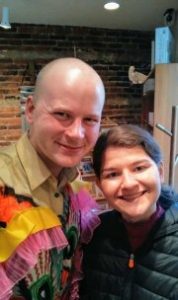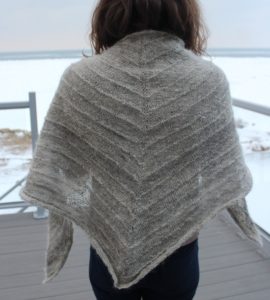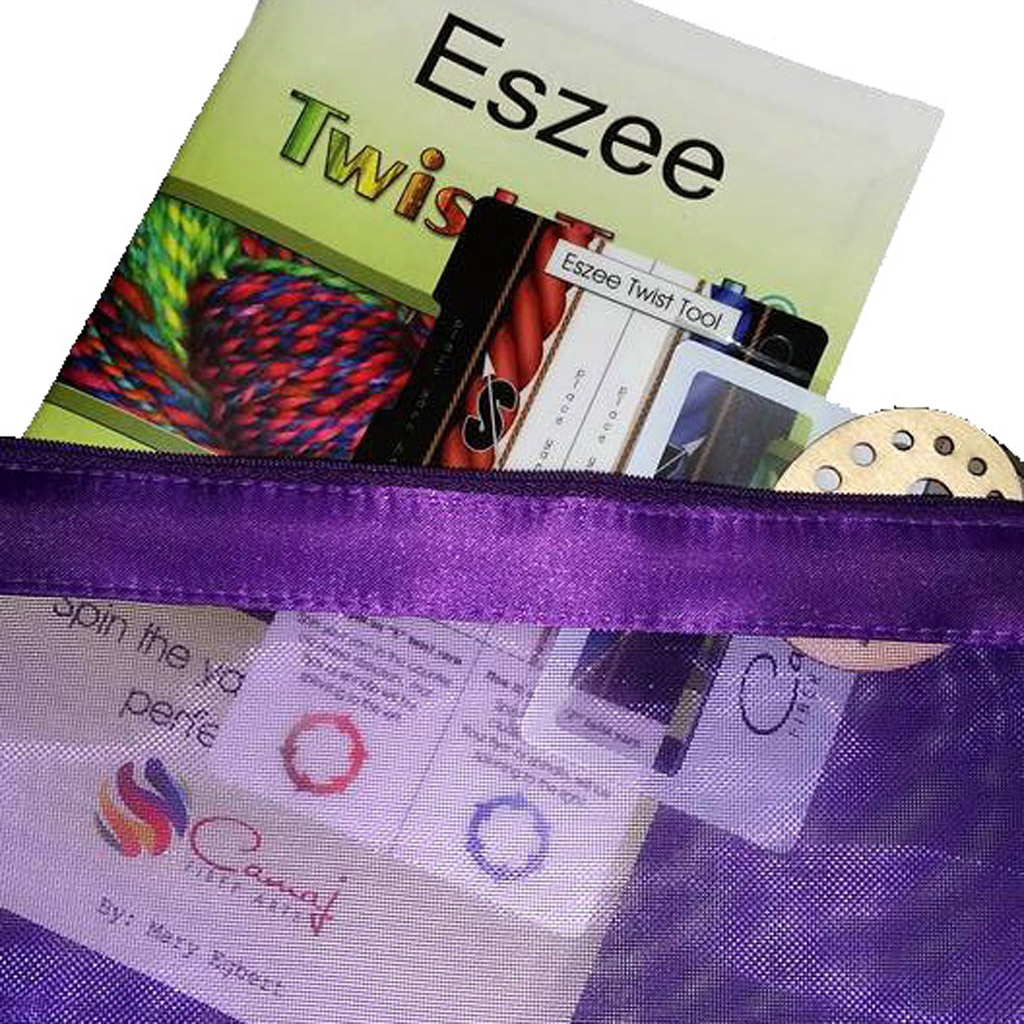This Is Your Brain on Spinning
We all find comfort in the flow of fibre through our hands and the gentle rhythm of treadling and drafting. And it turns out it’s all because spinning does good things to our brains.
We all find comfort in the flow of fibre through our hands and the gentle rhythm of treadling and drafting. And it turns out it’s all because spinning does good things to our brains.
Much has been written about finding time for ourselves. Especially during the COVID-19 lockdown in the United States, I saw many articles discussing the ways in which one can take advantage of the downtime. “Learn a new hobby!” many suggested. “Read these books this week!” I saw, too. Back when we thought the pandemic would last a whopping two weeks, we saw people find new ways of spending their time.
Let’s face it. Comfort spinning is a thing. So I turn to my wall of tubs – 42 tubs stacked against the west wall of my bedroom, my entire stash and most of my spindles, all that remains after serious destashing and moving halfway across the United States during the first summer of Covid.
I always admire those who are able to spin mountains of yarn for a big project, ready to knit a wonderful sweater or cardigan. It is a satisfying feeling when you finish all that work, especially if you started with washing and combing the wool or even raising your own sheep.
Jacqueline Harp
American Racka sheep photo provided by Nancy Richardson
All other photos by Jacqueline Harp
The spring 2021 issue of PLY featured a magnificent collection of articles on the topic of dual-coated sheep breeds. This issue contained an in-depth fleece study of American Racka sheep. The devotion and labor involved in caring for this special heritage breed demands extraordinary recognition. What better way to honor the dedication of the shepherdess who provided the fleece for the article than to gift her with a hand-knitted, 100 percent Racka wool shawl, handspun from the fleece of her flock! Join me in this unique fiber arts experience as we tackle the challenge of spinning a lofty yarn from the dual-coated fleece of the Racka.

Loft
When used to describe yarn, loft means light, airy, and having a soft handle. Generally, one would not pair loft with dual-coated because the latter often implies that the fiber is coarse, but that is exactly what can be accomplished with the right techniques from raw fleece to shawl. To demonstrate this almost alchemical process in the most dramatic way, I took the heavy, dual-coated fleece of the rare American Racka, and brought loft – lightness, soft handle, and rustic uniformity – to the yarn.
Raw fleece
When I first unrolled a whole Racka fleece on a table in my studio, I was greeted by an expanse of long, stunning silver-gray locks. The locks of an American Racka fleece contain four fiber types: an inner coat, an outer coat, guard hairs, and kemp. A Racka fleece can weigh around 6.5 pounds, with a micron count of 12–40 microns and staple lengths between 8–12 inches.
I skirted the fleece, taking care to remove vegetable matter and any felted locks along the perimeter. Once I finished skirting, I washed a few handfuls of the fleece in hot soapy water. The on-body felting I noticed while skirting indicated that Racka wool may be prone to felting, so I was extra careful not to agitate the fleece or change the temperature during scouring. Once the Racka wool was properly scoured, I laid it out to dry on a table.
Going woolen
The main challenge of this Racka fleece-to-shawl spin project was creating a lofty yarn. The woolen method of handspinning is a great way to achieve lofty, bouncy, and soft yarns. Thus, I chose the woolen method from preparation to spinning.
I took small handfuls of washed Racka locks and laid them in a single layer on my 90 TPI drum carder. I ran the locks through the carder twice to get them thoroughly mixed. The locks blended easily on the drum. It is important to note that although Racka locks hold four different fiber types, the carder did a wonderful job blending those fibers together to make well-blended, airy batts.
I pre-drafted the batts into long strips. This additional step helped make the fibers easier to spin, while still preserving the loftiness of the preparation.
Spinning with drop spindles
The strips of Racka batting felt coarse to the touch, communicating the need for low twist to soften the handle. The coarseness also meant the yarn would be softer and lighter as a single; plying would have added more twist and weight to the yarn, accentuating coarseness. The strength of the Racka fiber allows for a low-twist single that has structural integrity and a softer handle. Thus, I spun all the pre-drafted Racka batts with top whorl drop spindles, using the long draw spinning method. The resulting yarn was a fingering weight single with a WPI of 14.

Finishing
I finished the singles in a bath of hot water, still being careful not to cause felting by overhandling. I squeezed out excess water and gave the yarns the “whack” treatment against the edge of the sink. This gives more loft to the singles by setting the twist and encouraging the fibers to bloom.

The pattern
The fun part was deciding on a shawl pattern for my handspun Racka singles. I ended-up choosing the Boneyard Shawl, a free pattern offered by Stephen West (Westknits). It is an enchanting design that can make use of a variety of yarn weights.

I actually had the good fortune to meet Stephen in person back in 2019, when I happened to be in town to visit my LYS, the Fibre Space, located in Alexandria, VA. Stephen was teaching once of his in-person classes at the time, and I waited over an hour just to take a picture with him, and he was kind enough to oblige.
Knitting
The Racka singles knit effortlessly upon my needles. I finished and blocked the shawl after a soapy bath. After it dried, it was beautiful and fairy-like.
Although it was not next-to-the-skin soft, the yarn was noticeably softer after knitting and was not unpleasant to wear. It also felt warm, light, and springy when worn across my shoulders.


Sendoff
I carefully packaged the shawl and sent it to Nancy Richardson, the American Racka shepherdess. Nancy is a champion for her sheep breed and takes great care of her sheep. She was delighted to receive the shawl and was frankly shocked to see that I was able to create such a wearable and beautiful product from the Racka fleece. She remarked how gorgeous it was to see the natural colors of silver and gray move in a gentle fade throughout the fabric.
Parting thoughts
It has been a pleasure to show you how versatile Racka wool is and what happens when it is prepared and spun using the woolen method. It shows that achieving loft is possible when spinning rare, unusual wools from the dual-coated breeds. As you contemplate your next lofty spin project, don’t be afraid to try your own sheep-to-shawl project and rise above the presumption of coarseness.

Jacqueline Harp is a freelance writer and multimedia fiber artist who spins, felts, weaves, crochets, and knits in every spare moment possible. She is also a certified Master Sorter of Wool Fibers through the State Univ. of N.Y. (Cobleskill) Sorter-Grader-Classer (SGC) Program. Her Instagram handle is @foreverfiberarts.

Click here to add your own text
Post written by Mary Egbert
When I first started spinning some 11 years ago, I gave no thought to measurements, twist, etc. I sort of just went for it. Little did I know I was missing key spinning fundamentals that would help my yarn not fall apart.
After taking a woolen to worsted class with the famous Jacey Boggs Faulkner, I realized I needed to step up my game if I was going to spin yarn worthy of a project.
I studied twist, angles, and what measurements I needed to keep track of during the journey of spinning a bobbin of yarn that took my yarn from meh to looking like a professional, seasoned spinner.
I thought other spinners could use a tool with all the necessary measurements in one place, so the Eszee Twist Tool was born.

The Eszee Twist Tool measures yarn thickness and angle of ply twist and has guides for S and Z direction and wraps per inch. It even comes with a Yarn Planner booklet that shows you how to use the Eszee Twist Tool. The booklet also goes into depth about whorls and twist and takes you through the steps to spin yarn, such as chain ply, corespun, cables, and more. It also shows you how to calculate for a 2-ply and 3-ply yarn.
If you are struggling to spin a consistent yarn, the Eszee Twist Tool and Yarn Planner may be helpful to you and your spinning journey. You can find it at Camaj Fiber Arts.
Do you know about something new or hot or rare — fiber, tools, events? We’d love to feature it on our blog or newsletter. If you’re making/planning something new you think people should know about, let us know!
PLY Magazine believes that Black lives matter, as well as LBGTQI+ lives. Those most vulnerable and persecuted in our communities deserve our love and support. Please be good to each other.
Did you know we also have a monthly PLY newsletter? Sign up here!
Did you know we also have a monthly PLY newsletter? Sign up here!
Jillian starts by sharing the businesses who contributed tools and fiber to the Consistency issue (listed on Independent Spinner page and below) and then explores her favorite parts of this issue. Jacey shared several videos illustrating some of the techniques used in the issue. Jillian explains and shows her favorite spinning tools from HipStrings—WPI tools and twist angle gauges. Jacey asserts the importance of measuring yarn (such as twist angle) before it is finished so it is easier to re-create that yarn. Jacey gives a preview of the upcoming Winter issue—Head and Hands—and discusses plans for PLYAway 2022. Finally, Jillian and Jacey encourage everyone to submit ideas for writing for PLY, especially for experiment-type articles where you don’t have to know any answers beforehand and just take the readers through your experiment and conclusions.
Specific information about PLYAway!
PLY Away 2022
April 19th-23rd, 2022
Plyaway.com
It’s happening, it’s really happening! After much stressing and debating, PA22 is on! For everyone’s safety, health, and feeling of security, we will be requiring all teachers, attendees, and vendors to be fully vaccinated. If there are changes in the Covid-19 situation, we will adapt and change as well.
Because of all of this, there has been some juggling and shuffling. On October 18th, the full list of teachers was posted on the website. All the fiber-rific classes were revealed on October 20th. Registration will open Oct. 30th at 11am Central for everyone who was registered for PA20 (you’ll get an email and registration code) and on Oct. 31st at 11am Central, registration will be open to all.
If you were set to vend at PA20, we’ll be reaching out about PA22.
Finally, we’re always looking for fibery goodies for the PA goodie bags (we are thrilled to exchange bazaar ads for goodie bag items). Silent auction items and door prizes are also welcome! Everyone gets mentioned in the PA program too! Get in touch with Jess.cook@plymagazine.com for more details.
Links mentioned in this quarter’s video:
Wheels
Did you know we also have a monthly PLY newsletter? Sign up here!
PLY Magazine believes that Black lives matter, as well as LBGTQI+ lives. Those most vulnerable and persecuted in our communities deserve our love and support. Please be good to each other.
Did you know we also have a monthly PLY newsletter? Sign up here!
book by James Rebanks
I’ve read this book twice, first when it was released in England last year, and just recently I listened to the audiobook. My first read told me it was important information, but I let myself be carried along, entranced by the storytelling.
The deeper information about farming and how farming has changed hooked me, subtly but deeply. I started reading more about farming and sustainability as articles came across my various feeds.
When I listened to the book for my second read, the importance of sustainably growing food and raising animals is all I heard.
James Rebanks is an excellent writer; he can put you squarely in a moment or a place. He currently farms and raises sheep and cows with his family. This land in the Lake District in the north of England has been in his family for 600 years, and he gives it the respect it deserves.
The book is divided into three sections.
Nostalgia presents the type of farming he remembers from his youth, how his grandparents farmed. It is rotational farming, working with and preserving the land.
Progress is the farming he saw in his teens and twenties, his father’s farm. The farming focused on increased production at the cost of everything else; the health of the land, the animals, the farmers, and the consumers can be damned as long as inexpensive food is on the shelves. This is the era of giant tractors, pesticides, growth hormones, and single crop farms. Much of the world still farms this way.
Utopia closes the book. This is the farming Rebanks and his family currently practice. It’s mostly back to the ways of his grandfather, with modern “progress” only where it makes sense to the bigger environmental picture.
He doesn’t sugarcoat how hard this type of farming is. He works with environmental agencies and receives subsidies to farm in favor of the land and animals, to restore and maintain the biodiversity of his land, but he still has to do work away from the farm to make ends meet.
This is the type of farming we should be striving toward, and this book gives me hope it can happen if we respect and focus on the well-being of the land, animals, the farmers, and our own health.
James Rebanks gives me hope for the future of farming and our environment.
Did you know we also have a monthly PLY newsletter? Sign up here!
PLY Magazine believes that Black lives matter, as well as LBGTQI+ lives. Those most vulnerable and persecuted in our communities deserve our love and support. Please be good to each other.

We’d love to hear your tips for our Spring 2022 Goat issue.
How do you control flyaways when spinning goat?
Share your tip on the form here on the website.
The person who submits our favorite tip will get a prize from us! It’s our way of saying thanks for sharing your wisdom with the PLY readers. Trust me, it’s nice.
Did you know we also have a monthly PLY newsletter? Sign up here!
PLY Magazine believes that Black lives matter, as well as LBGTQI+ lives. Those most vulnerable and persecuted in our communities deserve our love and support. Please be good to each other.
This site uses cookies. By continuing to browse the site, you are agreeing to our use of cookies.
OKLearn moreWe may request cookies to be set on your device. We use cookies to let us know when you visit our websites, how you interact with us, to enrich your user experience, and to customize your relationship with our website.
Click on the different category headings to find out more. You can also change some of your preferences. Note that blocking some types of cookies may impact your experience on our websites and the services we are able to offer.
These cookies are strictly necessary to provide you with services available through our website and to use some of its features.
Because these cookies are strictly necessary to deliver the website, refusing them will have impact how our site functions. You always can block or delete cookies by changing your browser settings and force blocking all cookies on this website. But this will always prompt you to accept/refuse cookies when revisiting our site.
We fully respect if you want to refuse cookies but to avoid asking you again and again kindly allow us to store a cookie for that. You are free to opt out any time or opt in for other cookies to get a better experience. If you refuse cookies we will remove all set cookies in our domain.
We provide you with a list of stored cookies on your computer in our domain so you can check what we stored. Due to security reasons we are not able to show or modify cookies from other domains. You can check these in your browser security settings.
These cookies collect information that is used either in aggregate form to help us understand how our website is being used or how effective our marketing campaigns are, or to help us customize our website and application for you in order to enhance your experience.
If you do not want that we track your visit to our site you can disable tracking in your browser here:
We also use different external services like Google Webfonts, Google Maps, and external Video providers. Since these providers may collect personal data like your IP address we allow you to block them here. Please be aware that this might heavily reduce the functionality and appearance of our site. Changes will take effect once you reload the page.
Google Webfont Settings:
Google Map Settings:
Google reCaptcha Settings:
Vimeo and Youtube video embeds:
The following cookies are also needed - You can choose if you want to allow them:
